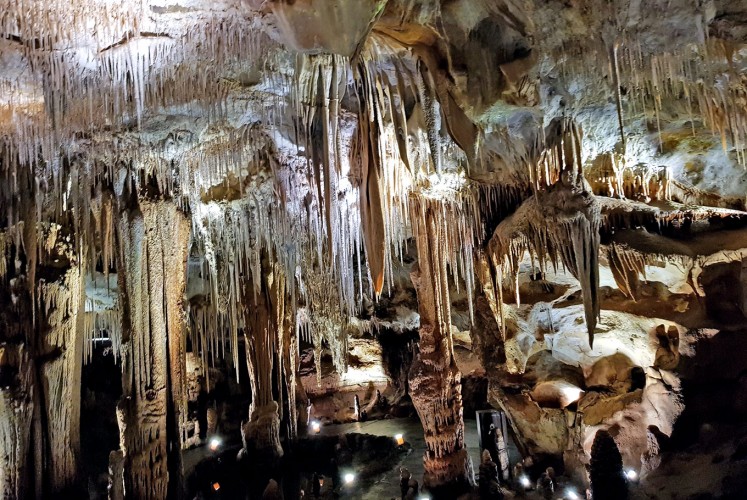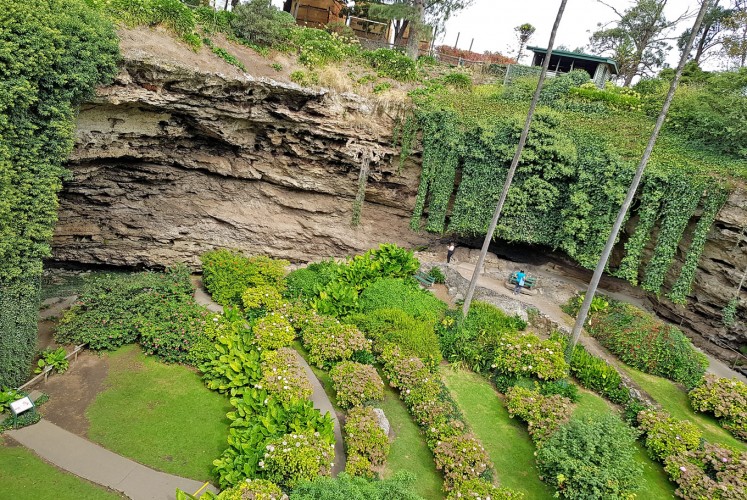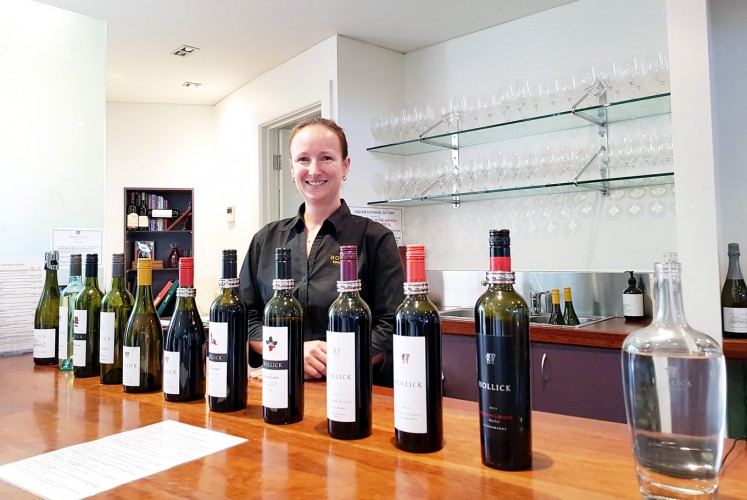South Australia, Down Under's hidden gem
Tourism Australia invited a group of journalists recently to attend Australia Tourism Exchange 2018 in Adelaide, South Australia, and explore the state through familiarization trips. Here are the reports.
Change Size
 The iconic Blue Lake on Mount Gambier (Shutterstock/File)
The iconic Blue Lake on Mount Gambier (Shutterstock/File)
"Where to go in Australia?”
Travelers may quickly mention New South Wales and Victoria, of which capitals Sydney and Melbourne, respectively, are best known for their famous landmarks – Sydney Opera House and Sydney Harbour Bridge, as well as Flinders Street Station and Federation Square.
While South Australia is still lesser known, it doesn’t lag behind its closest neighbors as it also boasts a wide array of experiences from wine and dining to savoring natural beauty. And its capital, Adelaide, dubbed as Australia’s boutique city, serves as a good base to start the adventure.
Many people may be familiar with the state’s iconic Kangaroo Island, considered the perfect spot to observe Australian wildlife. However, South Australia’s charm is also made up by a lot more spectacular natural landscapes, such as Tantanoola Caves Conservation Park, Umpherston Sinkhole and the Blue Lake on the Limestone Coast, and lush vineyards in some of the world’s renowned wine regions, including Barossa Valley, McLaren Vale, Wrattonbully and Coonawarra.
With more than 200 cellar doors, South Australia bears the title of the country’s wine capital. It was named recently the great wine capital of the world, similar to other notable wine-producing regions such as France’s Bordeaux, United States’ Napa Valley and Argentina’s Mendoza.
With various experiences it can offer, the Limestone Coast is one of the great points to explore South Australia. Destinations in the region can be accessed by a few hours’ drive from Adelaide or flight of less than an hour to Mount Gambier, a city in the southeastern part of the state.
One of the most-alluring destinations is Tantanoola Caves Conservation Park, located nearly 30-kilometers from Mount Gambier. The cave was incidentally found by 16-year-old Boyce Lane when he went rabbit hunting in 1930. For long, the site was owned by the Lane family and opened to the public. Later in the early 1980s, it was transferred to Parks Australia.

The cave is set into a marine cliff – Up and Down Rock – and was formed thousands of years ago. It comprises a unique combination of stalactites, stalagmites and helictites in shades of pink and brown.
Unlike numerous limestone caves that the Limestone Coast is famous for, Tantanoola Cave is a dolomite one, the cave’s guide Jacqui Mortensen noted, adding that it continues to develop.
Other interesting destinations around Mount Gambier are Umpherston Sinkhole and the Blue Lake.
Umpherston Sinkhole, also known as the Sunken Garden, used to be a limestone cave resulting from the corrosion of limestone rocks by sea waves. The sinkhole was formed when the roof of the chamber collapsed.

It was James Umpherston who turned the site into a garden in 1886. Enjoying sunset while watching hundreds of possums flock into the garden to feed is among the most popular activities there.
The iconic Blue Lake, meanwhile, is one of the craters of the extinct volcano, Mount Gambier, after which the city was named. The color of the lake changes through different seasons. Perhaps, summer is the perfect time to enjoy its beauty as its color turns into vivid blue.

Those seeking great wines should also spend some time in Coonawarra, the Limestone Coast’s key wine region.
Coonawarra derives from an Aboriginal word that means a hill covered by honeysuckle trees. The region hosts dozens of wineries, including boutique ones, such as Hollick Estates, Balnaves of Coonawarra and Bellwether Wines. Red wine lovers should not miss putting Coonawarra, home to Australia’s best cabernet sauvignon, onto their must-see list.
The prime quality of Coonawarra wines is inseparable from its ancient soil, called terra rossa – Italian for red soil. The soil, made through the transformation of limestone within thousands of years, is believed to affect vine vigor and ripeness, and eventually, the flavor of the wines.
Apart from Coonawarra, the uniqueness of terra rossa soil in grape growing can also be seen in nearby regions, such as neighboring Wrattonbully, well-known for tempranillo and shiraz.
Like elsewhere, wine tasting in Coonawarra’s cellar doors is not complete without dining. Hollick Estates, for instance, offers a broad range of premium table wines and icon wines it produces with modern Australian cuisine at Upstairs at Hollick restaurant. Visitors can enjoy panoramic views across the vineyards in the center of Coonawarra while sipping its food-friendly blends. Hollick’s floor-to-ceiling windows also allows them to see into its barrel shed.
Everyone who loves walking can also explore Coonawarra, which stretches only 20-km, by taking the Coonawarra Wineries Walking Trail. However, camping or glamping are also alternatives worth to try.

Bellwether Wines tries to provide both activities at its Glen Roy Shearing Shed. One can sleep in a tent surrounded by old red gums aged over than 500 years in total night darkness along with whole sounds of nature and wake in the morning to kookaburras and cockatoos in the trees.
Winemaker Susanne “Sue” Bell, the owner of the place, believes that camping or glamping satiates people’s enthusiasm about food and wine by letting them indulge in the environment where both come from.






